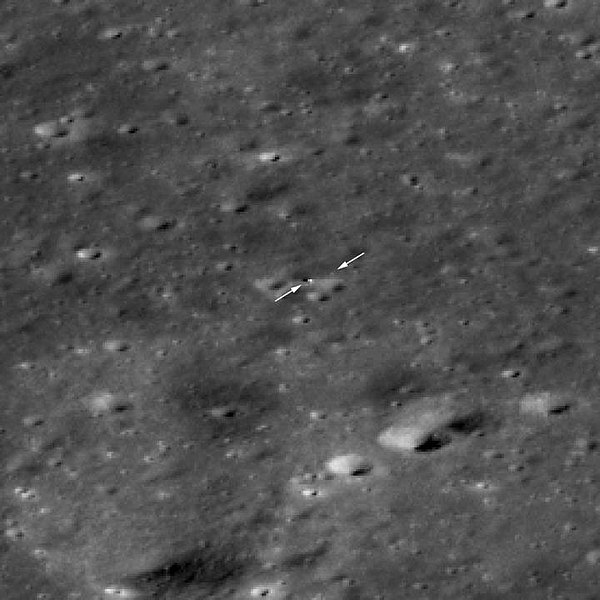Chang'e 4 is a robotic spacecraft mission in the Chinese Lunar Exploration Program of the CNSA. China achieved humanity's first soft landing on the far side of the Moon with its touchdown on 3 January 2019.
Chang'e 4 – Lander (left arrow) and Rover (right arrow) on the Moon surface (NASA photo, 8 February 2019).
Chang'e 4 lander (center) and rover (west-northwest of lander) 6 months after landing.
The first panorama from the far side of the Moon by Chang'e 4 lander, with the Yutu-2 rover
Chang'e, originally known as Heng'e (姮娥), is the goddess of the Moon and wife of Hou Yi, the great archer. Renowned by her beauty, Chang'e is also known for her ascending to the Moon with her pet Yu Tu, the Moon Rabbit and living in the Moon Palace (广寒宫). She is one of the major goddesses in Chinese mythology, Chinese folk religion, Chinese Buddhism, Confucianism, and Taoism. In modern times, Chang'e is the namesake of the Chinese Lunar Exploration Program.
Chang'e flies to the Moon drawn by Tsukioka Yoshitoshi
The painting The Moon Goddess Chang E, dated to around 1500 (Ming dynasty)
The ornate style of clothing worn by these four women suggests they are Immortals. The osmanthus leaf held by the largest figure, at the right, identifies her as the Moon Goddess Chang’e, who inhabits her celestial palace along with a rabbit that prepares the elixir of long life.
The jade rabbit lived on the Moon preparing the elixir of life.







